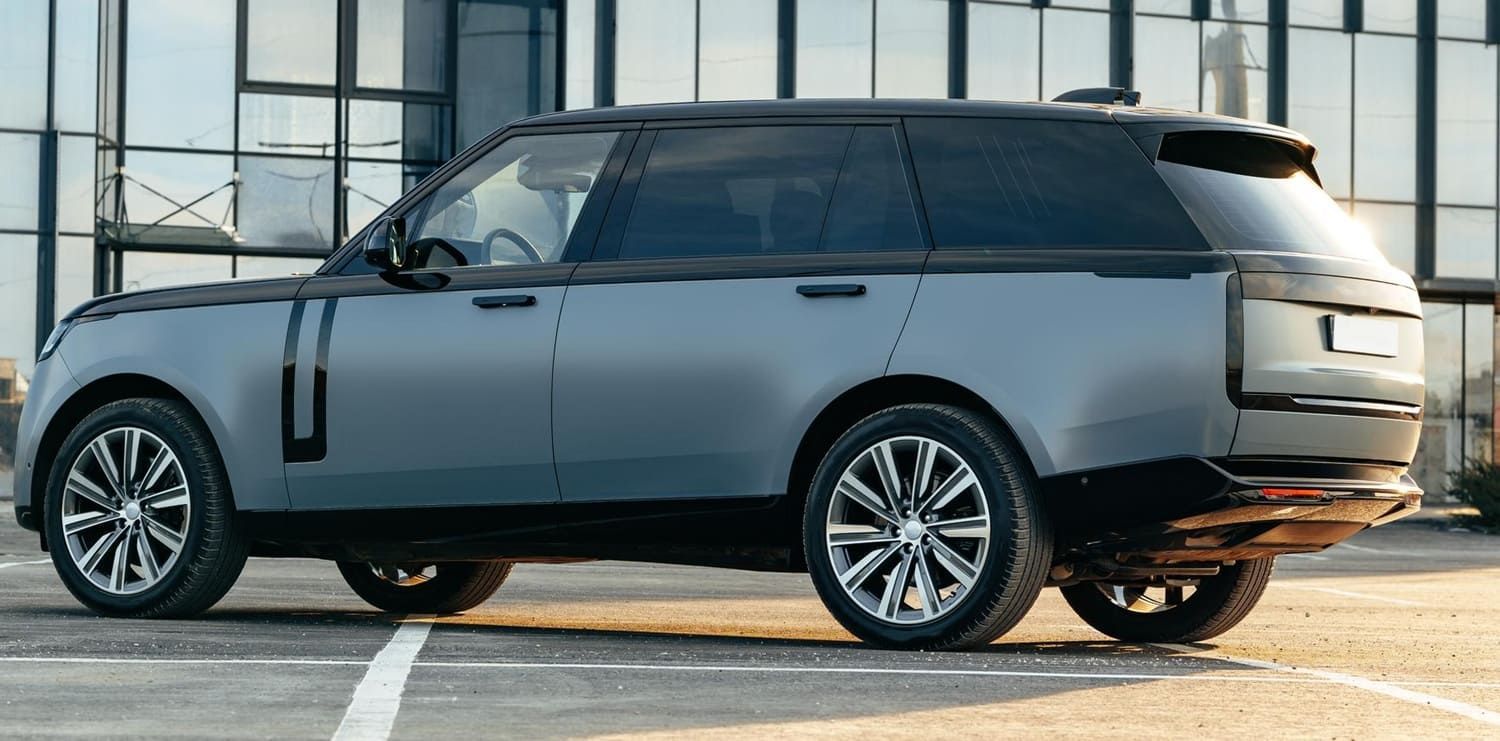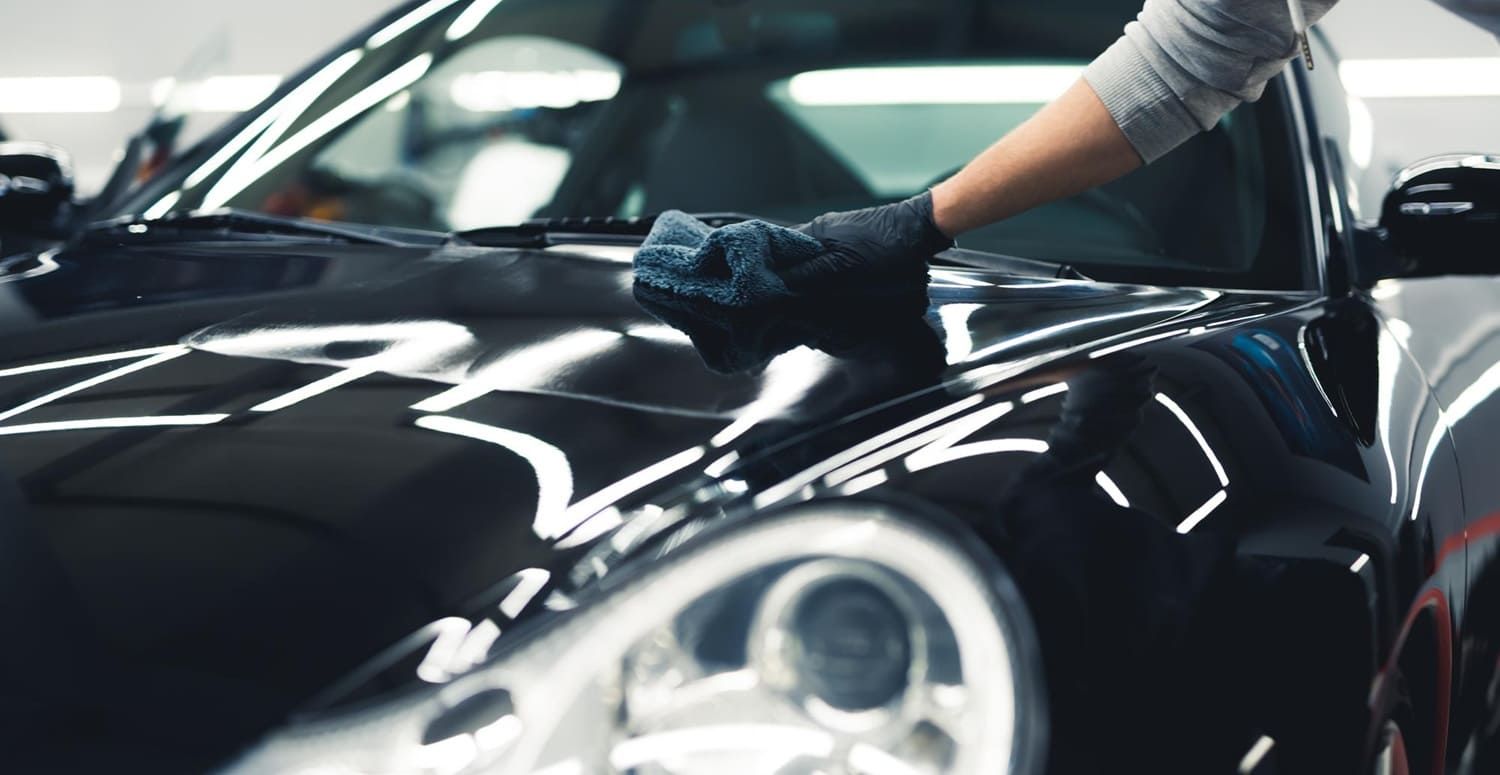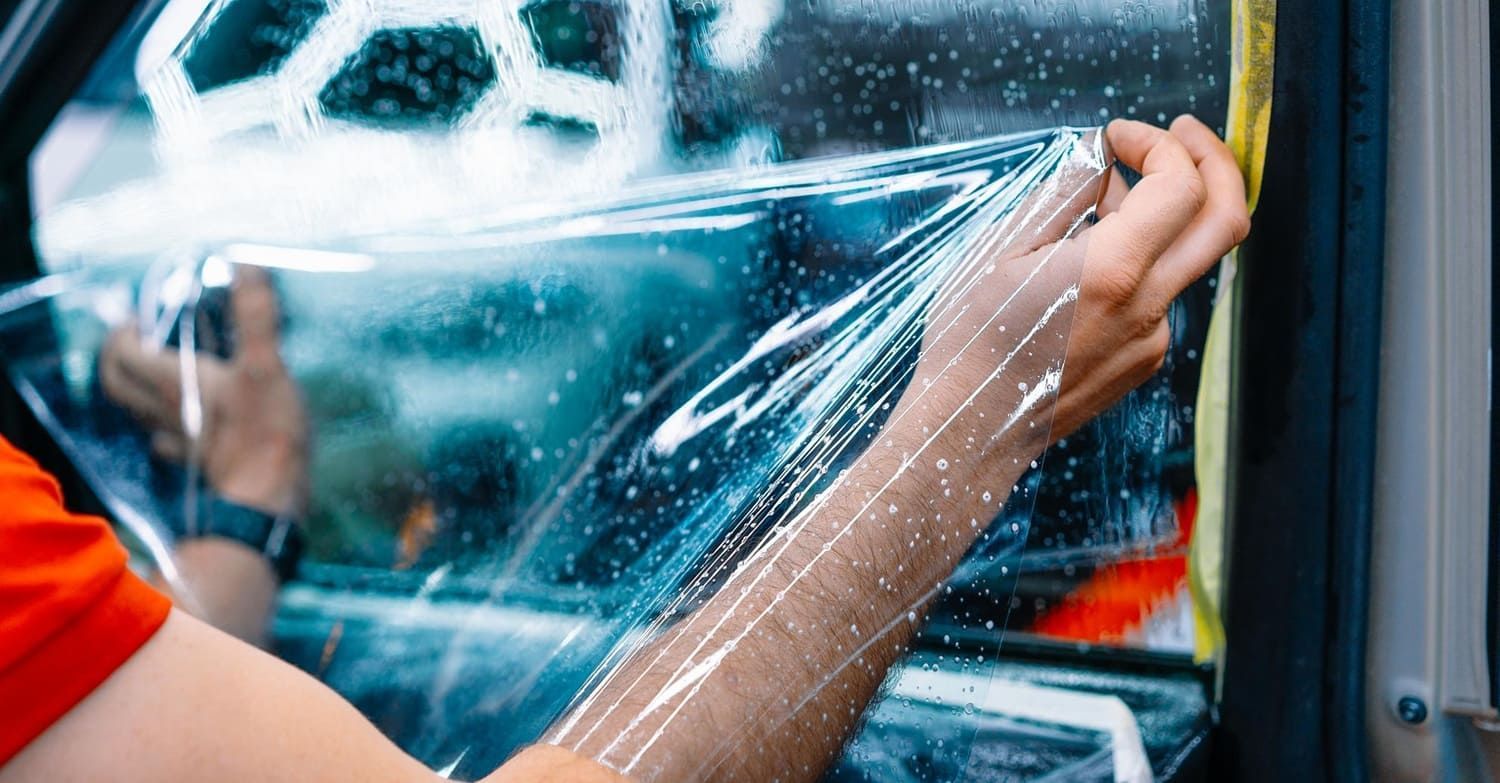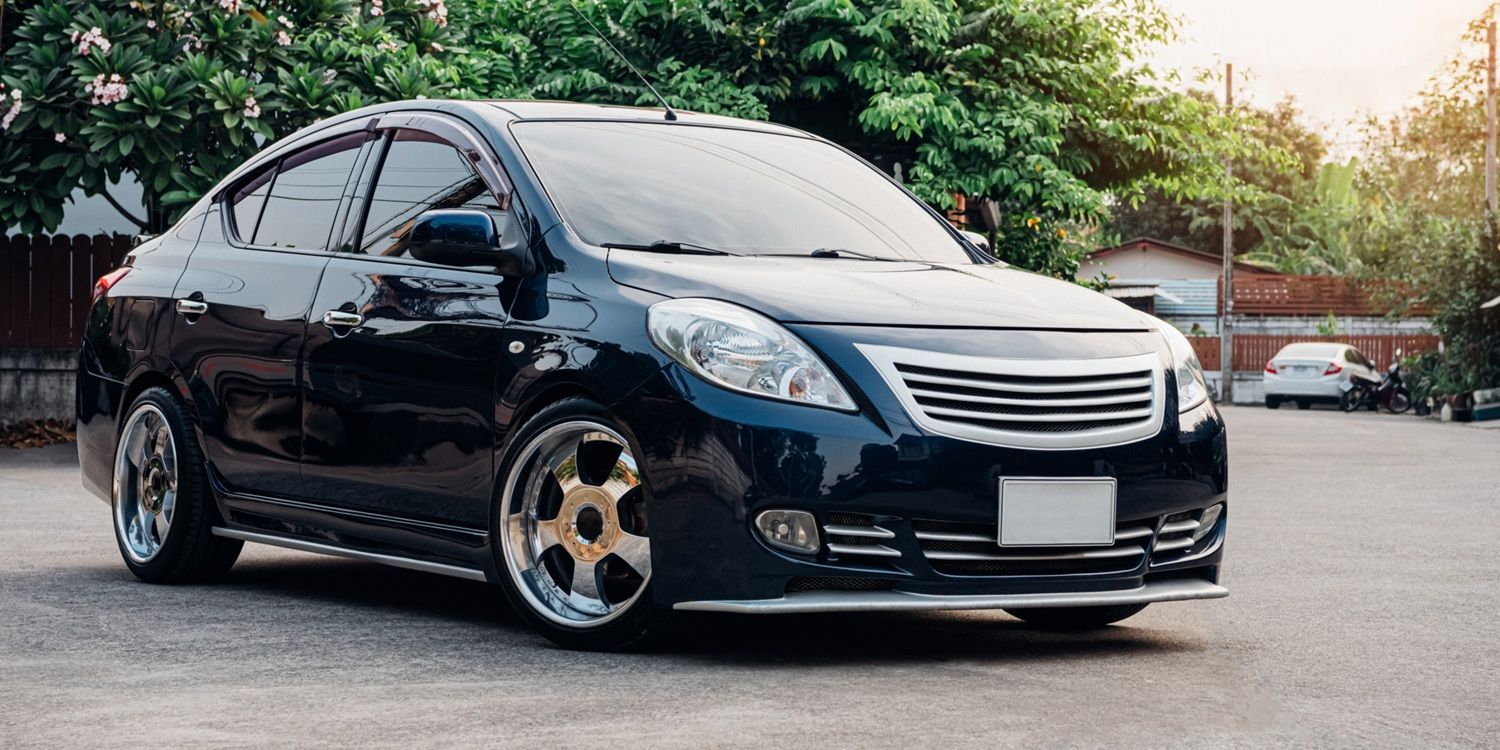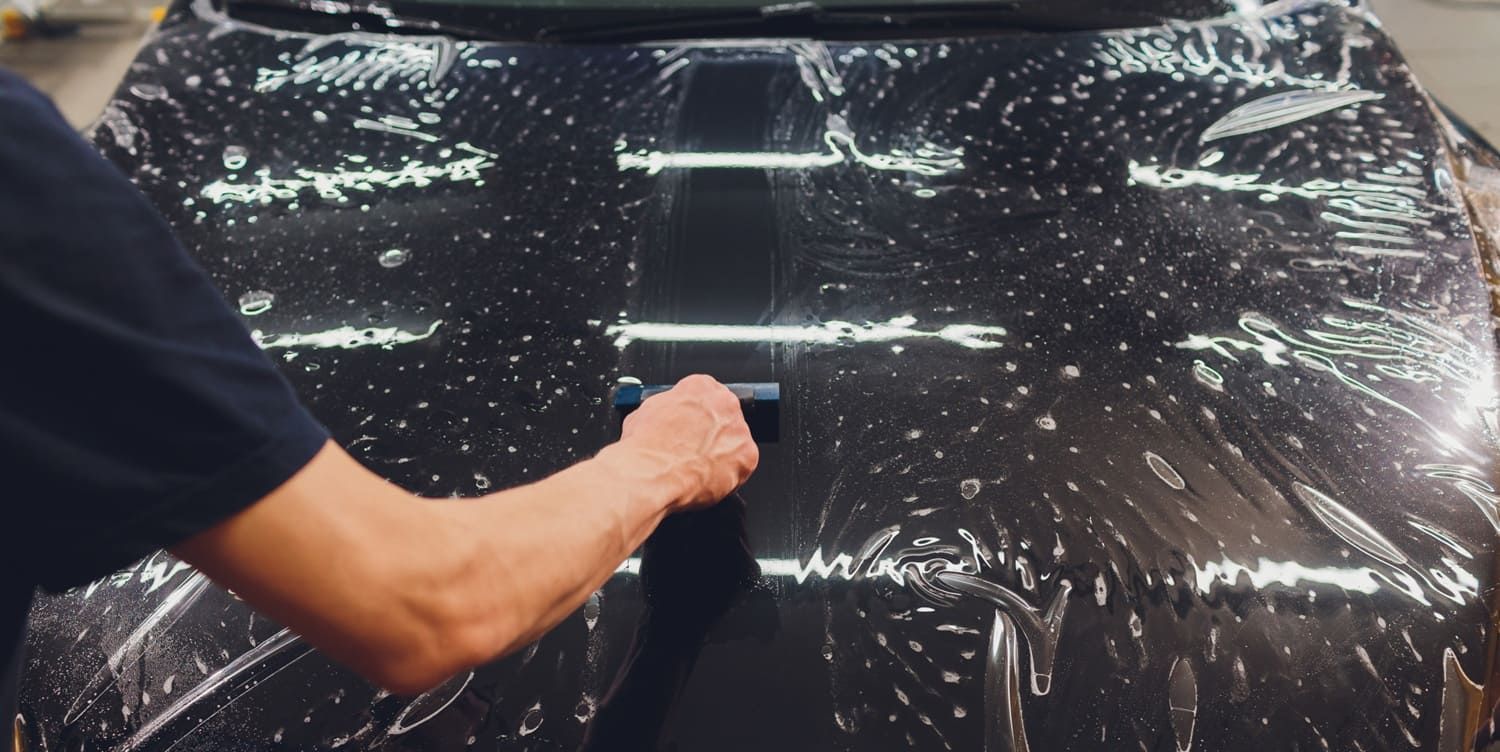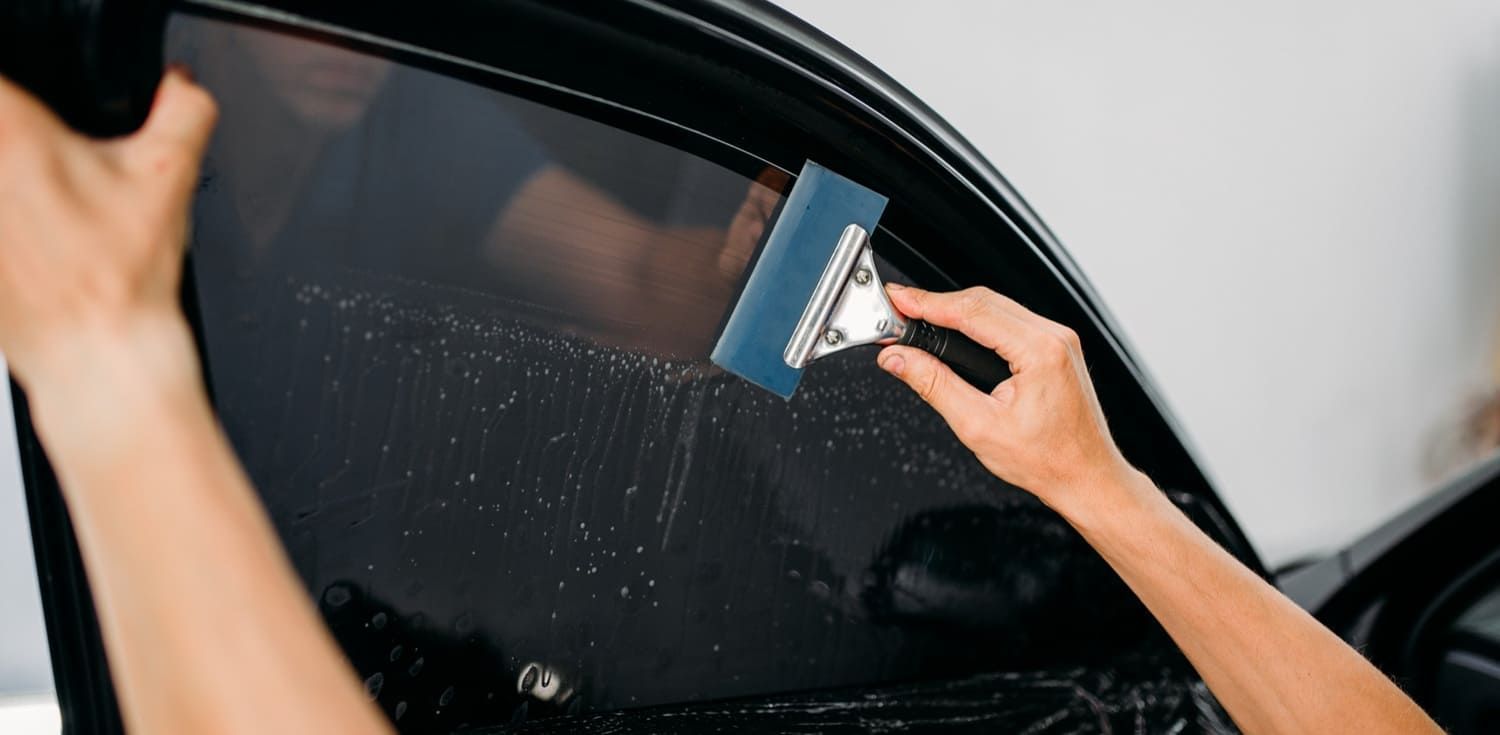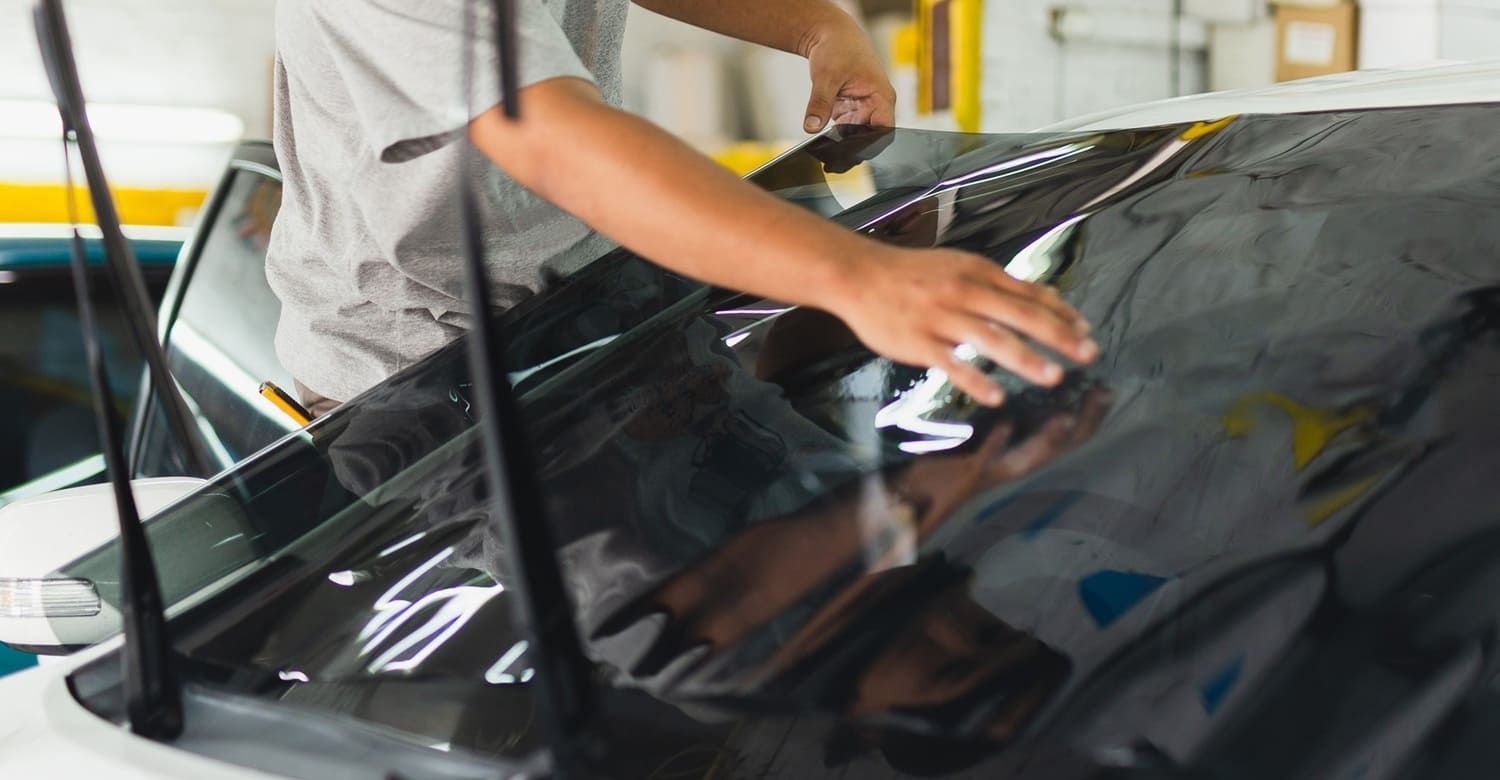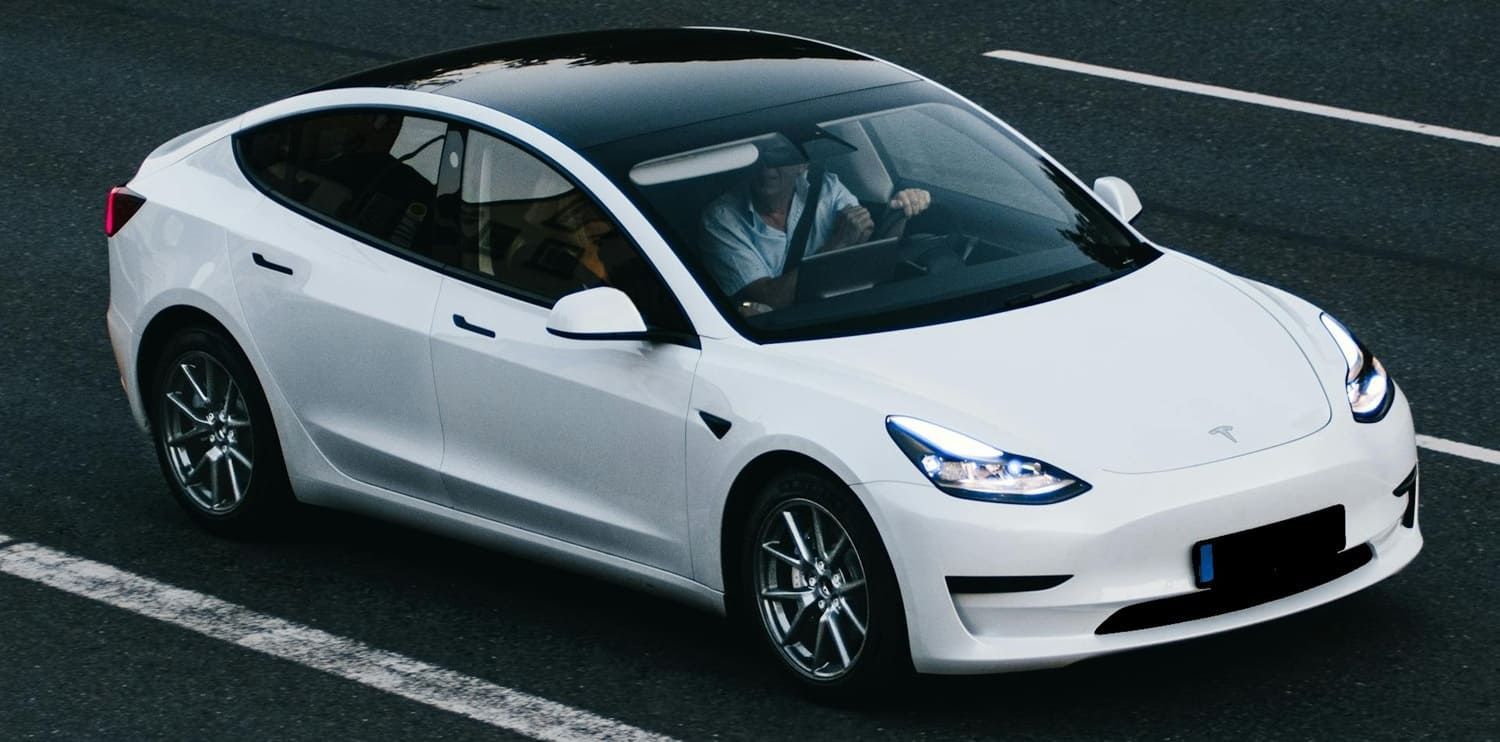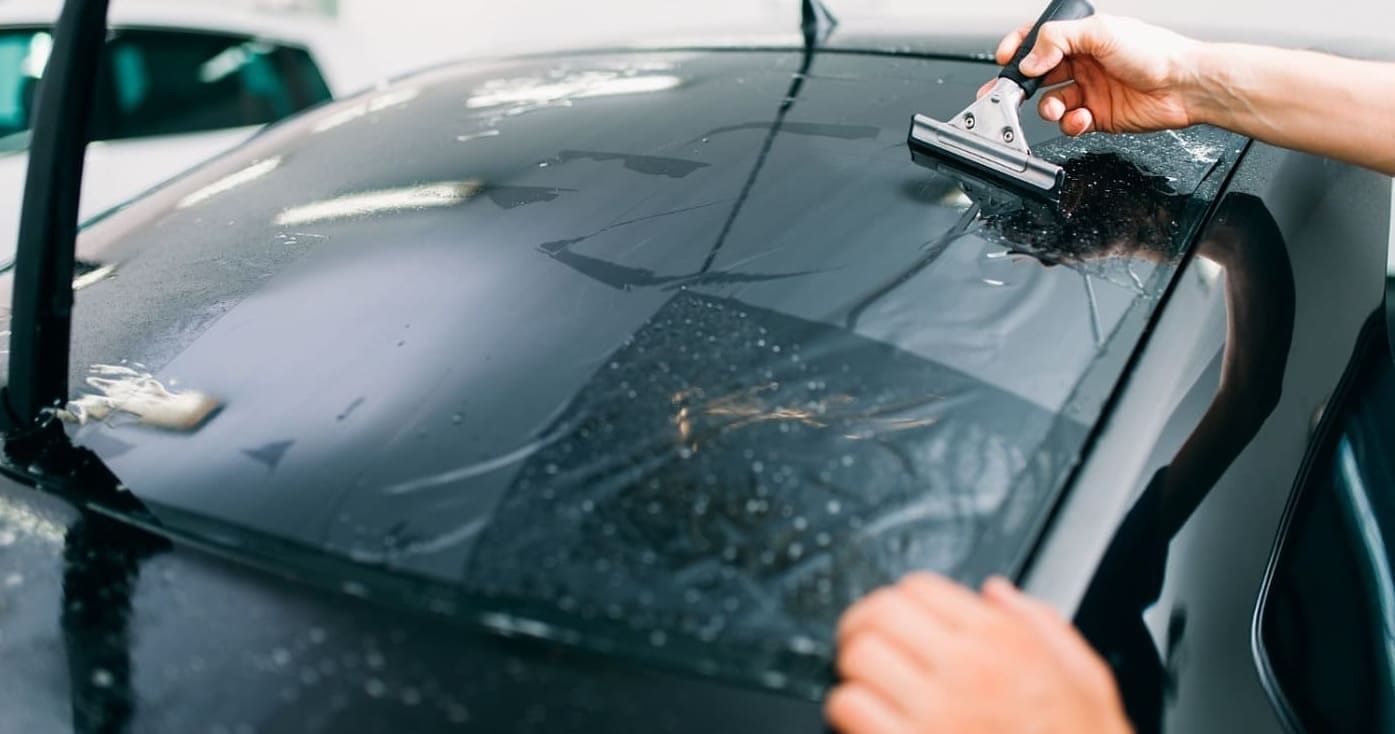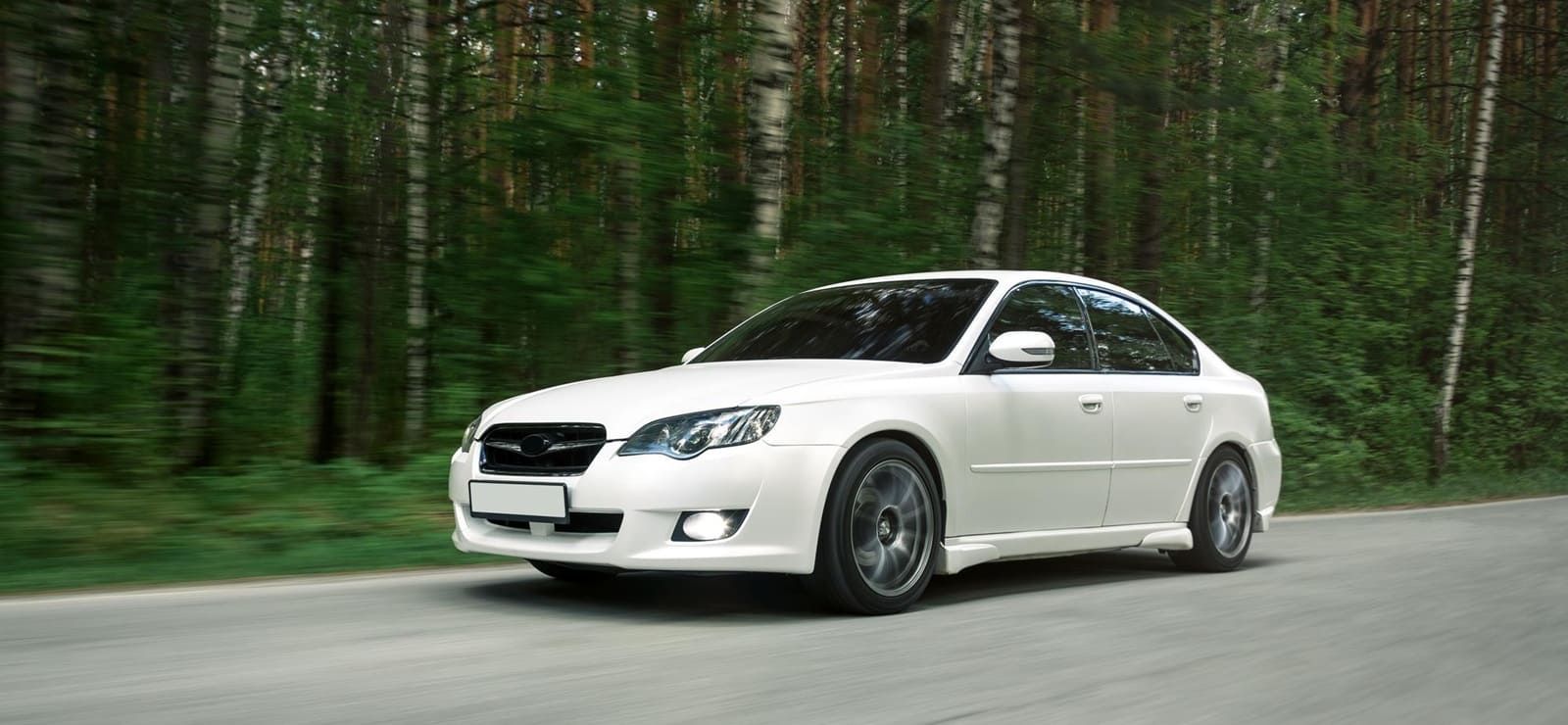How PPF Protects Your Car from Scratches, Chips, and UV Damage
Ever heard of
Paint Protection Film (PPF)? It's like a superhero cape for your car, keeping it safe from all those annoying scratches, chips, and even the sun's harsh UV rays. Your car goes through a lot, from pebbles on the road to bug splatters on a long drive. That's where PPF steps in, acting like an invisible shield. It's not just about protection; it also keeps your car looking shiny and new. Let's dive into how this film works its magic.
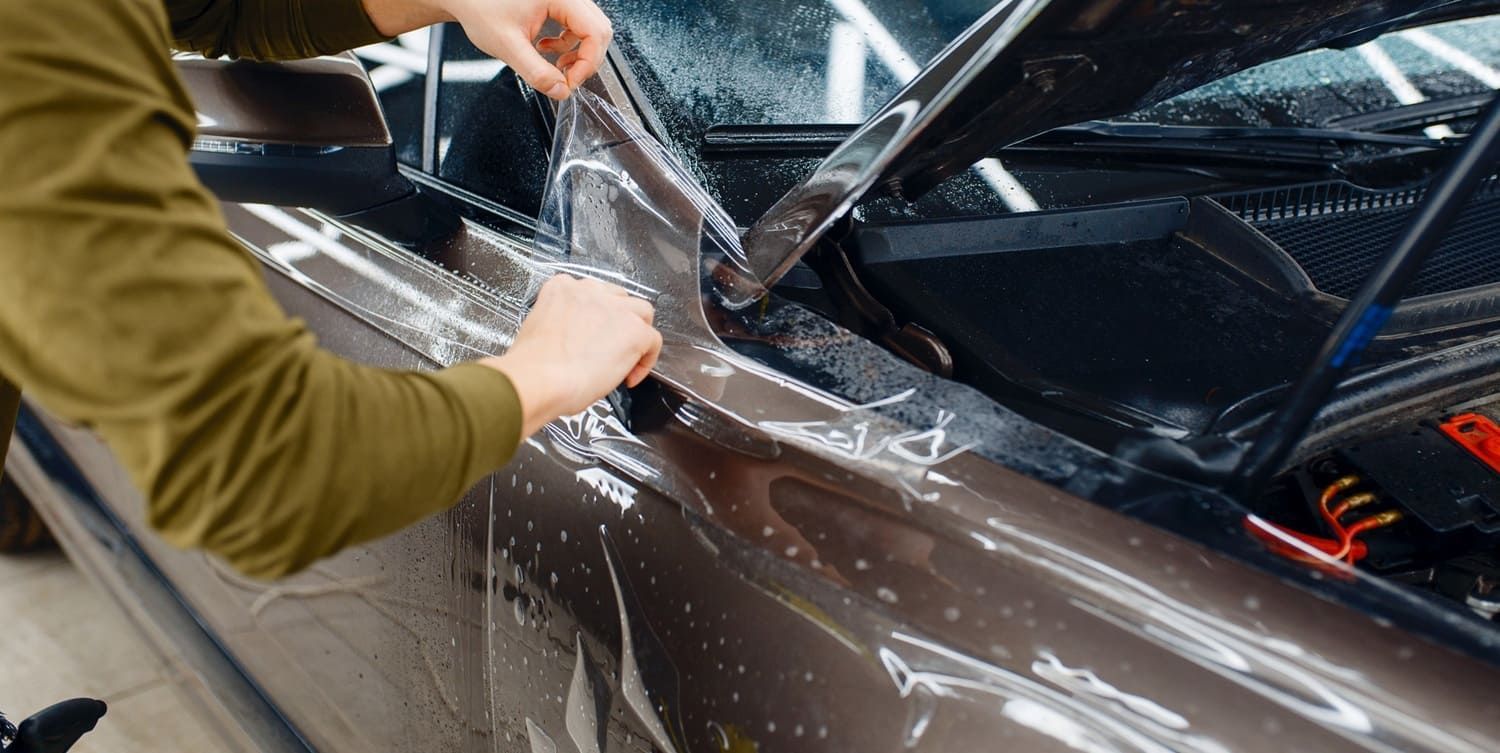
Key Takeaways
- PPF acts as a protective barrier against road debris, preventing chips and scratches.
- It offers UV protection, helping to keep your car's paint from fading over time.
- Self-healing properties in some PPFs allow minor scratches to disappear with heat exposure.
- Regular maintenance of PPF is essential for its longevity and effectiveness.
- While the initial cost might seem high, PPF can save money on paint repairs in the long run.
Understanding Paint Protection Film Benefits
Scratch and Chip Resistance
Paint Protection Film (PPF) is like a secret bodyguard for your car. It wraps your vehicle in a thin, invisible layer that takes the brunt of road abuse. Imagine cruising down the highway, and suddenly, a stray rock flies up. Normally, you'd cringe at the thought of a chip or scratch. But with PPF, that rock bounces right off, leaving your paint job pristine. It's all about peace of mind, knowing that your car's finish is safe from those everyday hazards.
UV Protection Features
The sun is relentless, isn't it? Over time, those UV rays can really do a number on your car's paint, causing it to fade and lose its luster. That's where PPF steps in. It acts like sunscreen for your car, blocking those harmful rays and keeping your paint looking fresh and vibrant. You won't have to worry about your car looking dull or aged before its time.
Self-Healing Properties
Here's where it gets really cool—PPF has this amazing self-healing ability. Think of it as your car's own superpower. Minor scratches and swirl marks just disappear with a bit of heat from the sun or your engine. It's like magic! So, those little scuffs from keys or brushes with branches? They vanish, keeping your car looking flawless without any extra effort on your part.
With PPF, your car isn't just protected; it's ready to face the world with confidence, maintaining its showroom shine no matter what the road throws at it.
How PPF Shields Against Environmental Threats
Protection From Road Debris
Driving down the highway, your car faces a barrage of tiny projectiles—gravel, pebbles, and bits of debris kicked up by other vehicles. Without protection, these can chip away at your car's paint, creating unsightly marks and potential rust spots. Paint Protection Film (PPF) acts like a clear, flexible armor, absorbing the impact and preventing these small missiles from causing damage. Whether you're navigating a gravel road or just cruising behind a truck, PPF keeps your car's exterior looking pristine.
Defense Against Bug Splatters
Bugs are more than just a nuisance when they splatter across your car's hood and windshield. The acids in their bodies can eat away at your paint over time, leading to permanent damage. With PPF, your car gets an extra layer of defense. It stops the acidic residues from bugs from reaching the paint, making it easier to wash off the mess without worrying about long-term effects. Especially in warmer months or in areas with lots of insects, this protection is crucial to maintaining your car's finish.
Guarding Against Acid Rain
Acid rain is another environmental threat that can wreak havoc on your car's paint. The chemicals in acid rain can cause the paint to dull and even corrode over time. PPF acts as a shield, preventing these harmful substances from coming into direct contact with your car's surface. This means that even after a heavy downpour, your car's paint remains intact and shiny, reducing the need for frequent touch-ups and repairs.
Keeping your car's paint in top condition isn't just about aesthetics—it's about preserving its value. PPF offers peace of mind by protecting against common environmental threats, ensuring your vehicle stays looking new for longer.
The Application Process Of PPF
Surface Preparation Steps
Getting the car ready for PPF is like setting the stage for a good show. You can't just slap it on and call it a day. First, the car needs a thorough wash with a pH-neutral soap to get rid of dirt and grime. Then, detailers often use a clay bar to remove any stubborn contaminants stuck to the paint. It's essential to get the surface as clean as possible because any leftover dirt or grease can mess up the adhesion. After that, a close inspection for scratches or dents is crucial since PPF can highlight these imperfections.
Installation Techniques
Applying PPF is a bit of an art. The film is laid onto the car using a special solution that helps it slide around until perfectly positioned. This flexibility is super important because it lets the installer adjust the film to fit the car's curves just right. They use squeegees to smooth it out, pushing out any air bubbles or excess liquid. Think of it like putting on a screen protector for your phone, but way more complicated. Once the film is in place, the edges are trimmed neatly, and sometimes a bit of heat is used to seal the edges, making sure everything stays put.
Post-Installation Care
After the PPF is applied, there are a few things you need to do to keep it looking good. Avoid washing the car for at least a week to let the film fully adhere. When you do wash it, stick to gentle methods—no harsh chemicals or abrasive sponges. Regularly check the film for any signs of lifting or damage, especially around the edges. By taking these steps, you can ensure your PPF continues to protect your car effectively.
Maintaining Your PPF For Longevity
Regular Cleaning Practices
Keeping your Paint Protection Film (PPF) in top shape means regular cleaning. Think of it as giving your car a bath, but with a little more care. Use a mild soap or car wash solution and pair it with a soft, non-abrasive cloth or sponge. This routine helps to remove dirt and grime without scratching the film. Avoid harsh chemicals or abrasive scrubbing tools because they can mess up the film's surface. A friend of mine swears by this method, and her car looks just as good as when she first got the PPF installed, even after several years.
Periodic Inspections
Every now and then, take a close look at your PPF. Check the edges and any areas that might have taken a hit from road debris or minor abrasions. This isn't just about spotting damage; it's about catching small issues before they become big problems. If you notice any lifting edges or damage, it's better to get it fixed sooner rather than later. This kind of regular inspection keeps your PPF doing its job and your car looking sharp.
Avoiding Harsh Chemicals
When it comes to maintaining your PPF, not all cleaning products are created equal. Steer clear of harsh chemicals and abrasive cleaners. They can wear down the film and reduce its protective qualities. Instead, go for products specifically made for PPF. Also, consider using a ceramic coating designed for PPF. It can add an extra layer of protection, making it easier to clean and enhancing the film’s durability against UV rays and other environmental factors.
Keeping your PPF in great condition isn't just about looks—it's about making sure your car stays protected. Regular care not only keeps your vehicle looking fresh but also extends the life of your PPF, safeguarding your investment for the long haul.
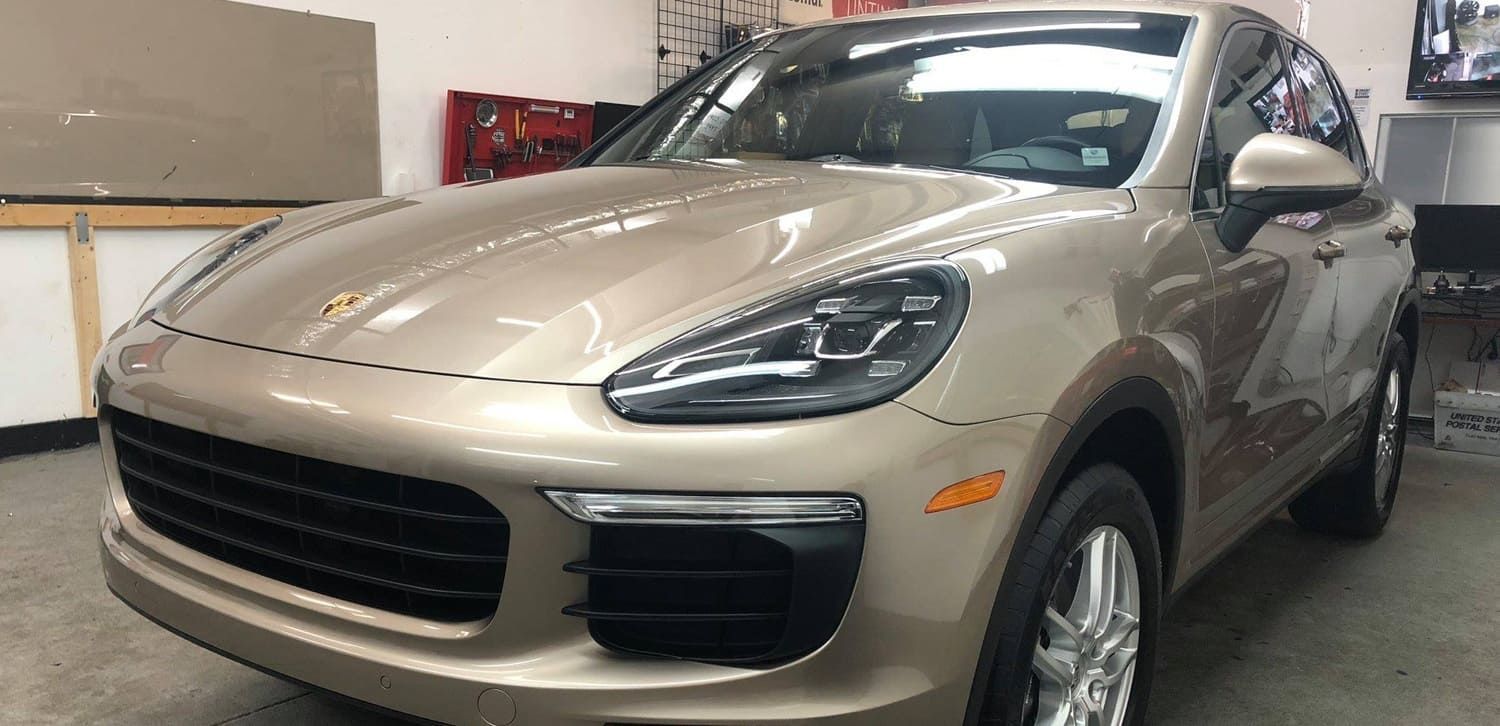
Identifying Vulnerable Areas Of Your Car
Commonly Affected Parts
When you're out on the road, certain parts of your car are more likely to get damaged than others. The front bumper, hood, fenders, side mirrors, and door edges are the usual suspects. These areas take a beating from rocks, road debris, and even bugs. Applying PPF (Paint Protection Film) to these spots can save you from a lot of headaches down the line. It's like giving your car a suit of armor, keeping those chips and scratches at bay.
Impact Of Road Conditions
Not all roads are created equal, and the condition of the road can seriously affect how vulnerable your car is to damage. Gravel roads, highways with lots of construction, or even just poorly maintained streets can throw up debris that chips away at your paint. And let’s not even talk about the winter roads with all that salt and sand. Understanding the roads you frequently travel can help decide where PPF is most needed.
Importance Of Coverage
Covering the most vulnerable areas of your car with PPF isn't just about keeping it looking good—it's also about protecting its value. A car with a pristine exterior is going to fetch a better price if you decide to sell it. Plus, those vulnerable parts, like the front bumper and fenders, are crucial for protecting what's underneath them. When they get damaged, it can affect the parts they're supposed to protect. So, investing in PPF is really about investing in your car's future.
Keeping your car's paint job intact isn't just for looks. It's about maintaining value and ensuring the longevity of the vehicle's structure. By protecting vulnerable areas with PPF, you’re making a smart move that pays off in the long run.
The Aesthetic Impact Of PPF
Maintaining Glossy Finish
One of the standout features of Paint Protection Film (PPF) is its ability to keep your car looking shiny and new. It acts like a clear coat of armor, preserving the glossy finish of your vehicle without altering its original look. The film is designed to be nearly invisible, so your car's paint job stays vibrant and eye-catching. This means you can enjoy that "just off the lot" shine for years, without the worry of dulling or fading.
Enhancing Vehicle Appearance
PPF not only protects but also enhances the overall appearance of your car. It's like giving your vehicle a facelift without any surgery. The film smooths out minor imperfections and prevents new ones from forming, making your car look sleeker and more polished. Plus, with its self-healing properties, minor scratches disappear over time, keeping your car looking pristine.
Invisible Protection
The beauty of PPF lies in its stealthy nature. It's like an invisible shield that guards against the elements without being seen. This film is so clear that it's hard to tell it's even there, yet it's working hard to protect your car from scratches, chips, and UV damage. It's like having a superhero cloak for your car, offering top-notch protection while letting the true beauty of your vehicle shine through.
With PPF, you get the peace of mind that your car's appearance is safeguarded against everyday hazards, all while keeping its aesthetic appeal intact.
Cost Considerations For PPF Installation
Average Installation Costs
Getting
paint protection film (PPF) on your car can be a bit of an investment, but it’s one that pays off in keeping your vehicle looking sharp. For a mid-sized car, you’re looking at spending anywhere from $1,500 to $2,500. This range depends on how much of the car you want covered. Just the front? Or the whole car? More coverage means more material and time, so costs go up.
Long-Term Value Preservation
PPF isn't just about the here and now; it's about the long haul. Spending money on PPF can actually save you bucks in the future. How? Well, by protecting your car from scratches and chips, you keep its resale value higher. Think about it: a car with a pristine paint job is way more appealing than one peppered with dings and scratches.
Factors Influencing Pricing
Several things can make your PPF installation more or less expensive:
- Size of the Vehicle: Bigger vehicles need more film, which means more money.
- Coverage Area: Full body coverage costs more than just doing the high-impact areas like the hood and fenders.
- Quality of Film: Higher quality films are pricier but often come with better warranties and longer-lasting protection.
- Installer Expertise: Going with a pro who knows their stuff can cost more, but it usually means a better job.
Investing in PPF might seem steep at first, but considering the protection and value it adds to your car, it’s a smart move for any car owner looking to keep their ride in top shape.
Wrapping It Up: Why PPF is a Smart Choice for Your Car
So, there you have it. Paint Protection Film (PPF) is like that invisible shield you never knew your car needed. At Top Line Motor Sport, we provide high-quality PPF installation to keep your ride looking shiny and new. It's not just about keeping your ride looking shiny and new, but it's also about saving you from those annoying chips and scratches that seem to pop up out of nowhere. Plus, with the added bonus of UV protection, your car's paint won't fade away under the sun's harsh rays. Whether you're cruising down the highway or just parked in your driveway, PPF has got your back.
It's a bit of an investment upfront, sure, but think of all the headaches you'll avoid in the long run. Your car stays looking fresh, and you get to enjoy the peace of mind knowing it's protected. So, next time you're thinking about how to keep your car in top shape, remember that PPF might just be the superhero cape your car deserves. Contact us today for a free estimate and let Top Line Motor Sport help you protect and enhance your vehicle with our premium Paint Protection Film services. Happy driving!
Frequently Asked Questions
What is Paint Protection Film (PPF)?
PPF is a clear film made from thermoplastic urethane that protects your car's paint from scratches, chips, and UV damage. It acts like a shield, keeping your car looking new.
How does PPF protect against scratches and chips?
PPF acts as a barrier, absorbing the impact from small stones and debris on the road, preventing them from scratching or chipping your car's paint.
Can PPF heal itself from minor scratches?
Yes, some advanced PPFs have self-healing properties that allow minor scratches to disappear when exposed to heat, like sunlight or warm water.
Does PPF affect the color of my car?
No, PPF is clear and does not change the color of your car. It enhances the gloss and shine without altering the original appearance.
How long does PPF last on a car?
With proper care, PPF can last up to 5 to 10 years, providing long-term protection against environmental threats and road hazards.
Is PPF worth the cost?
Yes, although PPF installation can be expensive, it protects your car's paint, maintains its value, and reduces the need for frequent repairs, making it a worthwhile investment.

